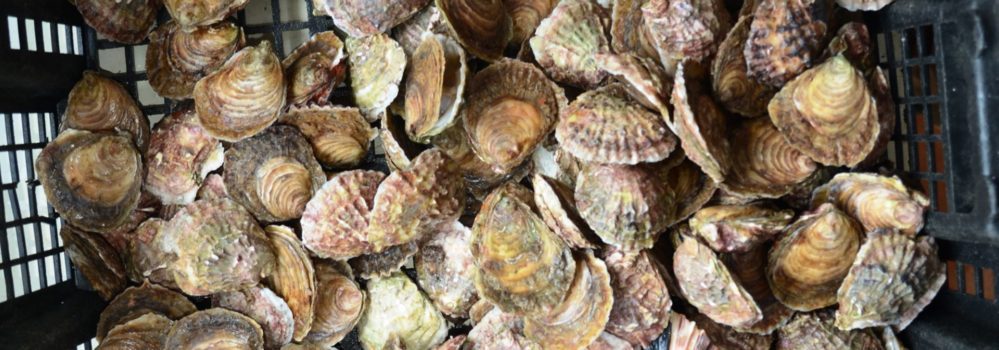
Oysters: Nature’s solution to pollution
By Cassidy McGurk
Oysters are known for being a delicious addition to a meal with family and friends. In addition to that, they are beneficial for water and coastal ecosystems – filtering water and providing erosion protections to coasts and estuaries.

However, commercial oyster harvesting greatly contributed to their ultimate decline. In the 1800s, oysters were a preferred table fare because of their abundance and low-cost. Harvest hit a peak in the late 1800s, but they began to decline in the 1900s. Additionally, many oyster populations were sickened by a disease called Dermo (Perkinsus marinus) in the 1940s and suffered from habitat loss at the hands of human development.
Oysters are part of the shellfish family. They are sessile, which means they tend to stay in one place. They mature as males first, and they are later able to reproduce as females. One female can release over 100 million eggs in a spawning event.
Oysters reproduce sexually and can spawn within their first year of life, but most reach the appropriate size by three years old. An oyster must eat phytoplankton and use that energy to grow reproductive organs. Once an oyster reaches reproduction size, it then uses environmental cues to spawn (temperature change, salinity) – roughly a two month process.
Spawning occurs at specific temperatures from 20°C to 30°C (68°F to 86°F) and at salinity above 10ppt. Usually, one oyster triggers the others to spawn. When a male oyster releases sperm, other oysters filter and detect the presence of it causing the rest to follow suit. The fertilization process occurs and the fertilized eggs drift away.
While the fertilized eggs are adrift, each undergoes cell division and becomes juvenile larvae. They swim in currents to eat. At about two weeks old, they develop a “foot” and use this to find substrate to attach to. Once attached, they secrete a glue and then undergo metamorphosis.
Baby oysters, called spat, will direct all their energy into their growth. They become a juvenile oyster at one year and an adult at three years. They can grow an inch a year depending on salinity and water quality. Higher salinity typically equates to faster growth.
Oysters eat by filtering water – making them one of the most effective nature-based solutions for water quality improvements in estuaries and bays.

One full grown oyster can filter up to 50 gallons a day by removing nitrogen, phosphorous, and other pollutants from water and adding it into their shells and tissues. While nitrogen is essential for natural ecosystem functions, too much of it can cause algae growth and decrease oxygen in the water.
In the Mid-Atlantic, market-sized oysters were at about 400 million in June of 2020 (down from 600 million in 1999). In the Southeast, oysters are thought to be between 15-20% of historic harvest levels.
Thankfully, projects such as recycling oyster shells from restaurants and watershed-scale oyster restoration projects have mitigated some decline and started the process of rebuilding and improving healthy populations.
Cassidy McGurk is a student at American Public University (APU) and a spring intern at Restore America’s Estuaries. She is working towards her BS in Environmental Science with a concentration in Fish & Wildlife Management.
